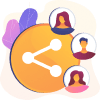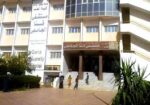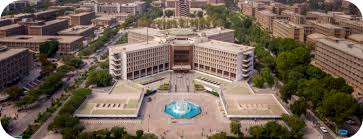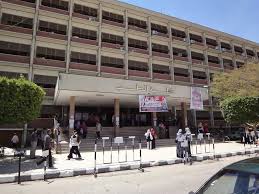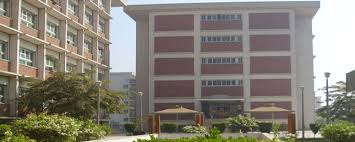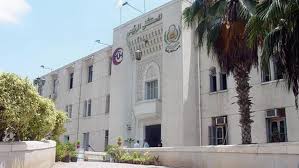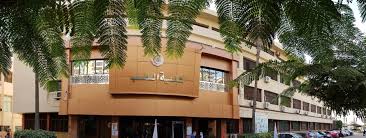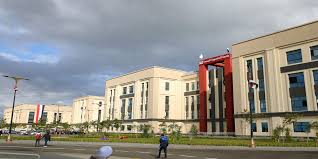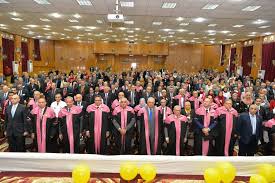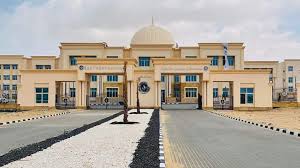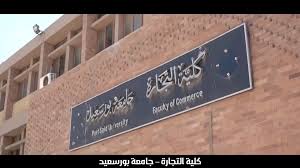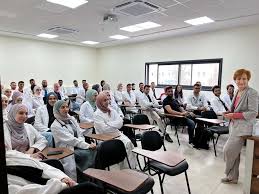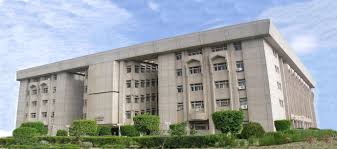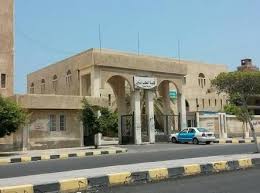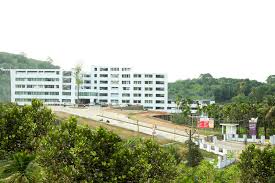Qena Faculty of Medicine, South Valley University
Jena Faculty of Medicine was innovated by Presidential Decree No. 267 of 2006 as a faculty within South Valley University in Upper Egypt.
About Qena Faculty of Medicine, South Valley University
South Valley University itself was first innovated by Presidential Decree No. 23 of 1995, following the splitting of its faculties from Assiut University. The Faculty of Medicine formally began its academic program in the 2007/2008 academic time, its accreditation being to educate, train, and graduate well-rounded and largely competent students with knowledge and clinical chops to address the healthcare requirements of the community.
Qena Faculty of Medicine, South Valley University – Table of Contents
- About
- Advantages
- Departments And Course Duration
- Facilities And Infrastructure
- Fee Structure
- Required Documents
- Eligibility Criteria
- Admission Process
- Benefits
- Privileges And Benefits for Indian scholars
- FAQ’s
The faculty originally operated within the academic structure that had been firstly allocated to the College of Dentistry. But as pupil registration constantly grew, the need arose to produce a separate structure for the Faculty of Medicine to save the position of education. The new structure was purposefully erected, coming to the council of Nursing and the College of Physical Therapy, and opposite the College of Pharmacy and the College of Dentistry.
This central position ensures close integration among the health care faculties, thereby easing inter-faculty cooperation and ease of movement for scholars and faculty members. The faculty now consists of 31 departments, of which 10 are academic departments that educate the abecedarian medical traditions and 21 clinical departments that work in university hospitals.
In addition to this, two new departments are being established: the Department of Family Medicine and the Department of Medical Education, which signifies the faculty’s fidelity to enhancing medical education and perfecting primary healthcare training.

Qena Faculty of Medicine, South Valley University Accreditations, Affiliations, Recognitions
The University Hospital started performing in 2008, with the Malabar Building being the original mecca for equipping and starting the clinical departments. In 2014, the general and technical surgery, orthopedic, and internal drug departments were transferred from the Kilo 6 Hospital, while obstetrics and gynecology, pediatrics, urology, ophthalmology, and ENT (observation, nose, and throat) departments remained functional in the Malabar Hospital.
In a bid to advance its capacity for healthcare, the faculty has embarked on a complete relief and expansion plan, which covers the development of an integrated ultramodern inpatient conventions complex near the Kilo 6 Hospital and a technical exigency structure that will be constructed with a view to offering 24/7 services.
The sanitarium presently hosts casualties doubly weekly, but the new installations will greatly increase the availability of services. Now, Qena Faculty of Medicine has come an established medical academic and healthcare installation in Upper Egypt and a contributing body in the field of medical education, clinical services, and exploration.
During the academic time 2019–2020, the faculty consisted of 330 academic staff, who inclusively tutored and guided about 1,656 undergraduate scholars and 363 postgraduate scholars. As it continuously evolves and grows, the faculty is a pillar of South Valley University and a center of medical invention in the region.
Advantages of Studying in Qena Faculty of Medicine, South Valley University
Clinical Exposure:
Students receive hands-on training in affiliated hospitals within Qena and surrounding areas, providing valuable practical experience.
Interdisciplinary Learning:
There are opportunities for collaboration with other faculties, such as Arts and Social Sciences, to enrich the educational journey.
Comprehensive Resources:
South Valley University boasts a large network of 25 libraries distributed across its faculties and dormitories, including a central university library.
Location & Affiliation Advantages
Strategic Location:
The Qena campus is located in a region with significant educational history and is well-connected to other important areas.
Student Life & Activities
Diverse Activities:
Students can participate in various cultural, social, and artistic activities, including singing competitions, drawing contests, and magazine publishing.
Talent Development:
The university encourages students’ talents and provides opportunities for artistic and personal growth.
Latest Notifications:
Departments And Course Duration in Qena Faculty of Medicine, South Valley University
MBBS Program at Qena Faculty of Medicine, South Valley University Departments and Course Duration
The Qena Faculty of Medicine at South Valley University( SVU) offers
a comprehensive Bachelorette of drug and Bachelorette of Surgery( MBBS/ MBChB) program designed to prepare scholars for medical practice through a rigorous class that blends theoretical knowledge with practical clinical experience.
The program has a duration of six times, which includes five times of academic study and one time of mandatory externship 14. This structure aligns with transnational medical education norms and ensures graduates are well- equipped to meet healthcare challenges in colorful settings.
1South Valley University is a public advanced education institution established in 1995 ( firstly as a branch of Assiut University before gaining independence) and is officially honored by Egypt’s Ministry of Higher Education 279.
The Qena Faculty of Medicine, established in 1990, is one of the university’s prominent faculties, known forits commitment to academic excellence and community healthcare development. The medium of instruction for the MBBS program isEnglish, making it accessible to transnational scholars, including a significant number of Indian scholars who choose this institution for its affordability and quality .
Course Duration and Structure
The MBBS program at Qena Faculty of Medicine spans six times, divided into distinct phases to insure a structured literacy progression
Preclinical Phase( Times 1- 3) This phase focuses on foundational introductory medical lores, including deconstruction, physiology, biochemistry, pathology, microbiology, and pharmacology. scholars engage in theoretical literacy and laboratory work to make a strong scientific base.
Clinical Phase( Times 4- 5) During this phase, scholars transition to clinical subjects and hands- on training in combined hospitals. They rotate through colorful departments similar as internal drug, surgery, pediatrics, obstetrics and gynecology, and psychiatry, gaining exposure to real- world medical scripts.
externship Time( Time 6) The final time is devoted to a mandatory externship where scholars work under supervision in sanitarium settings. This practical experience is pivotal for developing clinical chops and applying knowledge in patient care.
The program follows a semester- grounded academic timetable, with examinations generally held at the end of each semester to assess pupil progress 7. The class is designed to meet both indigenous and global healthcare norms, emphasizing exploration- grounded literacy and clinical practice.
Departments and Class
The Qena Faculty of Medicine houses multitudinous departments that cover both introductory medical lores and clinical specialties. Below is a detailed breakdown of the crucial departments involved in the MBBS program
Preclinical andPara-Clinical Departments
deconstruction Covers mortal deconstruction through lectures and deconstructions.
Physiology Focuses on body functions and mechanisms.
Biochemistry Explores chemical processes in living organisms.
Pathology Studies complaint causes and goods.
Microbiology Addresses microorganisms and their part in health and complaint.
Pharmacology Examines medicine conduct and remedial uses.
Clinical Departments
Internal Medicine opinion andnon-surgical treatment of adult conditions.
Surgery Provides training in surgical ways and patient operation.
Pediatrics Focuses on child health and conditions.
Obstetrics and Gynecology Covers reproductive health and parturition.
Psychiatry Addresses internal health diseases and treatments.
Emergency Medicine Manages acute medical conditions and extremities.
Cardiology Specializes in heart- related conditions.
Neurology Deals with diseases of the nervous system.
The class is designed to integrate interdisciplinary literacy, with collaborations across other faculties similar as veterinary drug, husbandry, and physical education to address broader healthcare needs 2. Scholars also share in exploration systems and community outreach programs, which are integral to the faculty’s charge of serving Upper Egypt’s population.
fresh Information
Teaching Language The medium of instruction for the MBBS program is English, which facilitates learning for transnational scholars.
Eligibility aspirants must have a high academy parchment with a focus on wisdom subjects (biology, chemistry, and drugs) and meet minimal grade conditions. Proficiency in English is also needed.
Recognition The faculty is honored by associations similar as the World Health Organization (WHO) and the National Medical Commission (NMC) of India, enabling graduates to pursue global career openings.
Research and Community Engagement scholars are encouraged to engage in exploration systems under faculty mentorship and share in community health enterprise, similar as medical juggernauts in pastoral areas.
Conclusion
The MBBS program at Qena Faculty of Medicine, South Valley University, offers a comprehensive and structured education that combines rigorous academic training with practical clinical experience. With a six- time duration encompassing both preclinical and clinical phases, followed by an externship, the program ensures graduates are well- prepared for medical practice. The different departments and interdisciplinary approach further enrich the literacy experience, making it a precious choice for aspiring medical professionals.
Latest Updates:
Facilities And Infrastructure in Qena Faculty of Medicine, South Valley University
Qena Faculty of Medicine provides modern facilities and a supportive academic environment that enable high-quality education, clinical training, and research. Its infrastructure is designed to cater to both academic excellence and healthcare service delivery.
Academic Infrastructure
-
Dedicated Faculty Building:
-
-
- A purpose-built medical faculty complex equipped with lecture halls, tutorial rooms, and seminar halls.
- Smart classrooms with modern teaching aids including projectors, audio-visual systems, and e-learning resources.
-
-
Basic Sciences Laboratories:
-
-
- Anatomy dissection hall with cadavers and anatomical models.
- Physiology, biochemistry, microbiology, pathology, and pharmacology labs equipped with advanced instruments.
- Simulation labs for practical demonstrations and skill training.
-
-
Library & Learning Resources:
-
- Central library with thousands of medical textbooks, journals, and periodicals.
- Access to electronic medical databases and online journals.
- Quiet study areas, computer facilities, and digital learning spaces.
Clinical & Hospital Facilities
-
University Hospital (Established 2008):
-
-
- Acts as the main teaching hospital for clinical training.
- Multiple specialized units including general and special surgery, internal medicine, pediatrics, obstetrics & gynecology, orthopedics, ENT, ophthalmology, and urology.
-
-
Kilo 6 Hospital:
-
-
- Houses advanced surgical, orthopedic, and internal medicine departments.
- Recently expanded with an integrated outpatient clinics complex and a dedicated emergency building operating throughout the week.
-
-
Maabar Hospital:
-
-
- Provides services in obstetrics, pediatrics, ENT, ophthalmology, and urology.
-
-
Emergency & Trauma Care:
-
-
- Equipped casualty and intensive care units, initially receiving emergency cases two days a week, with expansion for full-time service.
-
-
Clinical Training Facilities:
-
- Hands-on training in all medical and surgical departments.
- Exposure to diverse patient cases from Upper Egypt, enhancing practical learning.
Student Facilities
-
Hostels & Accommodation:
-
-
- Separate hostels for male and female students within university premises.
- Furnished rooms with essential amenities, study spaces, internet access, and recreational facilities.
-
-
Canteen & Food Services:
-
-
- Hygienic cafeterias and food courts offering affordable meals.
-
-
Sports & Extracurricular Facilities:
-
- Playgrounds and indoor sports halls for football, basketball, volleyball, and other activities.
- Student activity clubs, cultural events, and medical student associations.
Research & Development
- Research laboratories with modern diagnostic and experimental equipment.
- Support for postgraduate research, clinical studies, and community-based projects.
- Collaboration opportunities with national and regional healthcare institutions.
Official site For Qena Faculty of Medicine, South Valley University: Click Here
Qena Faculty of Medicine, South Valley University Fee Structure
Approximately Estimated fee will be 30 lakhs to 40 lakhs.
Required Documents For Admission in Qena Faculty of Medicine, South Valley University
- Valid passport (minimum 18 months validity)
- 10th and 12th-grade certificates and mark sheets
- Birth certificate
- Ten passport-sized photographs
- Official invitation letter from the university
- Authorization of all documents by the Ministry of External Affairs, New Delhi
- Legalization of all documents by the Egyptian Embassy
- Visa fees
- Bank receipt of first-year tuition fee payment
- Medical fitness certificate
Eligibility Criteria For Admission in Qena Faculty of Medicine, South Valley University
- Age: The student should be at least 17 years old
- Academic Qualification: Students must have completed their secondary education or equivalent from a recognized board with Physics, Chemistry, and Biology as mandatory subjects.
- Language Proficiency: International students must be proficient in the Chinese language as it is the language of instruction for the MBBS program.
- Entrance Exam: Students must clear the entrance exam conducted by the respective university.
- Health Checkup: International students must pass a medical examination to ensure they are fit to pursue MBBS studies
- No Criminal Record: A police clearance certificate can be procured in order to check whether the candidate is free from a criminal background.
Admission Process For Qena Faculty of Medicine, South Valley University
- Online Application: Fill out the application form and submit the required documents online.
- Fee Payment: Once the university reviews and approves the application, pay the required fees.
- Immigration Process: The university initiates the immigration process and issues an invitation letter after receiving the ministry order.
- Visa Approval: The visa approval process takes around 30 days.
- Screening: The university then undertakes a screening process in which the applicant must determine eligibility for admission to MBBS programs in Ain Shams University.
- Physical Copy of Admission Letter: A hard copy of the admission letter will be sent by the university, which you will need to complete the visa process and enrollment.
- Fly to Egypt: Book your tickets and travel to Egypt to join MBBS. Complete enrollment once you reach there and start with your education.
Get more details about the colleges in Egypt: Click Here
Benefits of Studying at Qena Faculty of Medicine, South Valley University
-
Government-Recognized Institution
-
-
- Established by Presidential Decree No. 267 of 2006, the faculty is part of South Valley University, a public university in Egypt, ensuring strong academic credibility and national recognition.
-
-
Strategic Location in Upper Egypt
-
-
- Situated in Qena, the faculty serves as a vital hub for medical education and healthcare in Upper Egypt, offering students unique exposure to diverse medical cases from both rural and urban communities.
-
-
Comprehensive Academic Programs
-
-
- Offers a 6-year MBBS program plus 2 years internship, aligned with national medical education standards.
- Strong integration of basic sciences and clinical practice, ensuring students gain both theoretical knowledge and hands-on clinical skills.
-
-
Wide Range of Departments & Clinical Exposure
-
-
- 31 academic and clinical departments provide training across all major specialties.
- Early clinical exposure and extensive hospital-based learning in university hospitals (Maabar Hospital and Kilo 6 Hospital).
- Expansion plans, including dedicated emergency and outpatient clinics, enhance students’ practical training opportunities.
-
-
Qualified Faculty Members
-
-
- Over 330 faculty members are actively engaged in teaching, mentoring, and supervising students.
- Continuous professional development and research involvement ensure updated medical education.
-
-
Research Opportunities
-
-
- Facilities for undergraduate and postgraduate research in both basic medical sciences and clinical medicine.
- Emphasis on community-based projects and public health initiatives that benefit society while giving students valuable field experience.
-
-
Affordable Education
-
-
- As a public university, tuition fees are significantly lower compared to private or international medical schools, making it accessible for students from various backgrounds.
-
-
Strong Student Support & Facilities
-
-
- Availability of hostels, libraries, laboratories, sports facilities, and student activity centers.
- Encourages extracurricular activities, cultural events, and student associations that contribute to holistic personal development.
-
-
Community-Oriented Training
-
-
- The faculty plays a key role in healthcare delivery across Upper Egypt, giving students exposure to real-world health challenges and opportunities to contribute directly to improving community health.
-
-
Pathway to Postgraduate Studies & Careers
-
- Graduates are eligible to pursue postgraduate specializations within South Valley University hospitals or other Egyptian universities.
- The MBBS degree is internationally recognized, providing opportunities for graduates to sit for licensing exams abroad (e.g., USMLE, PLAB, FMGE).
Privileges And Benefits for Indian scholars in Qena Faculty of Medicine, South Valley University
Encyclopedically honored MBBS Degree
The MBBS degree is awarded by South Valley University( a public university in Egypt) and is honored by the National Medical Commission( NMC) of India, the World Health Organization( WHO), and other global medical councils.
Graduates are eligible to appear for FMGE/ NExT( India), USMLE( USA), PLAB( UK), and other licensing examinations worldwide.
Affordable Education
Education fees are much lower compared to private Indian medical schools or universities in numerous other countries, making it a cost-effective option for Indian scholars and their families.
Living charges in Qena( Upper Egypt) are fairly provident compared to Cairo or abroad.
English-Medium Instruction
The MBBS program is tutored in English, which eliminates the language barrier for Indian scholars.
Scholars may also get the chance to learn introductory Arabic to interact with cases during clinical reels, adding to their skill set.
Strong Clinical Exposure
Training takes place at university hospitals( Maabar Hospital & Kilo 6 Sanitarium) where scholars gain hands- on experience across all major medical disciplines.
Exposure to a different range of medical cases in Upper Egypt improves individual and clinical chops, which is largely salutary for Indian scholars preparing for competitive examinations.
Safe & probative terrain
Qena is known as a peaceful and pupil-friendly megacity in Upper Egypt.
Indian scholars find a comfortable terrain with growing artistic diversity and probative faculty members.
Hostel & Accommodation installations
Separate and affordable hotel installations are handed out for manly and womanish scholars.
caravansaries are furnished and include internet, study areas, and food Services feeding to transnational scholars.
Cultural Comfort & Student Community
A significant number of Indian scholars are formerly studying at South Valley University, furnishing a sense of community and support.
Indian carnivals and artistic conditioning are frequently celebrated, helping scholars feel at home.
Research & Postgraduate openings
Indian scholars can share in exploration systems and community health enterprise, strengthening their academic profile.
After MBBS, scholars can pursue postgraduate studies in Egypt, India, or abroad.
Career Pathways Back to India
Since the MBBS program follows NMC guidelines, graduates can seamlessly return to India, clear the NExT/ FMGE test, and practice as certified croakers .
Lower Trip Costs Compared to Other Abroad Options
Direct flight connections between India and Egypt make the trip accessible and provident.
FAQ’s
In which language is the MBBS program taught?
The primary medium of instruction is English, which is suitable for Indian and other international students. Basic Arabic is taught to help students communicate with patients during clinical training.
Is the MBBS degree from Qena recognized internationally?
Yes. The MBBS degree from South Valley University is:
- Recognized by the National Medical Commission (NMC) of India.
- Listed in the World Directory of Medical Schools (WDOMS).
- Accepted by global medical councils, allowing graduates to sit for FMGE/NExT (India), USMLE (USA), PLAB (UK), and other exams.
Are hostel facilities available for international students?
Yes. The faculty provides separate hostel accommodation for male and female students with furnished rooms, study areas, internet, and access to food services.
How do students travel from India to Qena?
Students can fly from major Indian cities to Cairo International Airport. From Cairo, they can take domestic flights or trains to reach Qena. The journey is convenient and affordable.
Is Qena a safe city for students?
Qena, located in Upper Egypt, is considered a safe and peaceful city with a strong student community, especially around South Valley University. The university also ensures a secure campus environment.
What kind of clinical training do students receive?
Students gain extensive clinical exposure in university hospitals (Maabar & Kilo 6) across all specialties such as medicine, surgery, pediatrics, obstetrics & gynecology, orthopedics, ENT, ophthalmology, and more.
Also Check:





